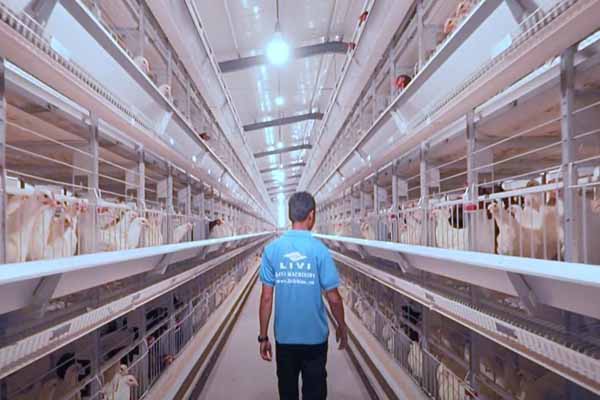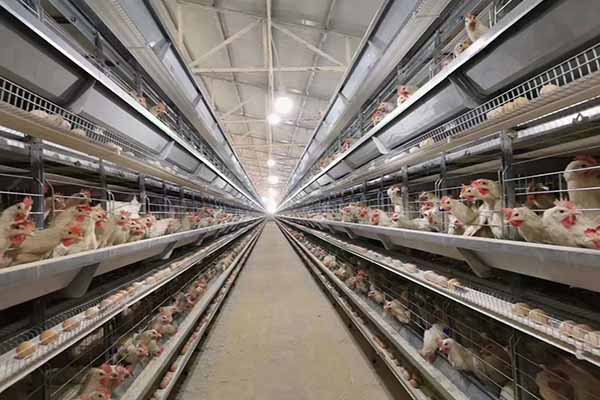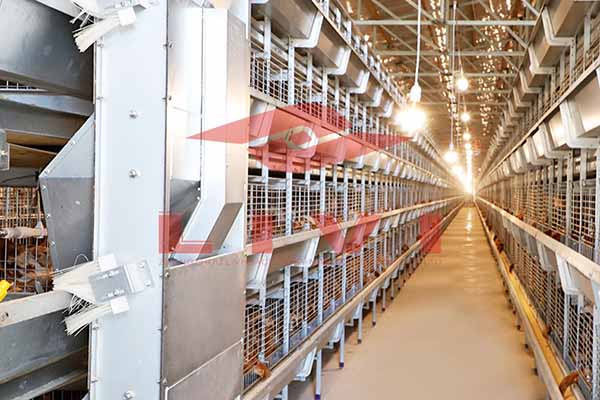How to Build a Chicken Farm in Uganda for 30000 Birds
Time : 2025-06-28
Starting a chicken farm in Uganda with the capacity to house 30,000 birds is a significant investment that requires careful planning and execution. This article provides a comprehensive guide on how to build and manage a chicken farm of this scale, with a focus on practical considerations and professional advice.

1. Market Research and Feasibility Study
Before embarking on building a chicken farm, it’s crucial to conduct thorough market research and a feasibility study. This will help you understand the local market demands, potential profitability, and the regulatory environment.

- Analyze the local and regional demand for chicken meat and eggs.
- Identify your target market, including supermarkets, restaurants, and direct consumers.
- Understand the legal and environmental regulations regarding poultry farming in Uganda.
2. Site Selection
The location of your chicken farm is critical to its success. Consider the following factors when choosing a site:
- Accessibility: Ensure the site is easily accessible to suppliers, customers, and workers.
- Water Source: A reliable and clean water source is essential for the health of the birds and the farm operations.
- Climate: Consider the local climate to optimize conditions for raising chickens.
- Space: Ensure you have enough space to build the required infrastructure for 30,000 birds.
- Land Cost: Balance the cost of land with its suitability for poultry farming.
3. Farm Design and Layout
A well-designed farm layout is key to efficient operations. Here are some guidelines for designing your chicken farm:
- Barns: Plan for the number and size of chicken houses. Consider the type of houses (battery, free-range, or biosecure) based on your business model and market preferences.
- Equipment: Invest in professional equipment such as feeders, waterers, incubators, and automated systems for feed and water distribution.
- Sanitation: Implement a biosecurity program to prevent disease outbreaks. This includes designated areas for feed, water, and manure handling.
- Power Supply: Ensure a reliable power source for lighting, heating, cooling, and machinery.
- Security: Install adequate security measures to protect your farm from theft and other threats.
4. Breeding Program
Choose the right breed of chickens that thrive in the local climate and meet your production goals. Consider the following factors:
- Breed Specificity: Select breeds that are known for high productivity and disease resistance.
- Genetic Quality: Partner with reputable breeders to obtain healthy, genetically superior stock.
- Feeding: Ensure the breed can be efficiently raised on the feed resources available to you.
5. Feed and Nutrition
Proper nutrition is crucial for the health and productivity of your chickens. Here are some tips:
- Quality Feed: Invest in high-quality, balanced feed that meets the nutritional requirements of your chickens at each stage of growth.
- Supplemental Feeding: Provide supplements as needed to ensure optimal nutrition.
- Feeding Schedules: Establish and maintain consistent feeding schedules to optimize growth and productivity.
6. Health Management
Implement a comprehensive health management program to prevent and control diseases:
- Veterinary Care: Regular veterinary check-ups and vaccinations are essential to maintain chicken health.
- Sanitation: Keep the farm clean and hygienic to prevent disease spread.
- Monitoring: Regularly monitor the health and performance of your chickens to identify any potential issues early.
7. Water Supply and Quality
Access to clean, fresh water is vital for the health and well-being of your chickens:
- Water Sources: Ensure a reliable source of water, considering the quantity required for your bird population.
- Water Quality: Regularly test water quality to ensure it meets health standards.
- Water Distribution: Install automated waterers that maintain consistent water pressure and flow rate.
8. Labor and Management
Effective management and a skilled workforce are essential for running a successful chicken farm:
- Training: Train your staff on farm operations, biosecurity measures, and health management protocols.
- Management: Implement a robust management system to oversee daily operations and maintain record-keeping.
- Leadership: Establish clear leadership roles and responsibilities to ensure smooth operations.
9. Sustainability and Environmental Considerations
Be mindful of the environmental impact of your farm operations:
- Waste Management: Implement an effective waste management plan to handle manure and other by-products.
- Energy Efficiency: Use energy-efficient systems and technologies to reduce costs and environmental impact.
- Conservation: Practice conservation methods to preserve natural resources and promote sustainability.
10. Funding and Investment
Raising capital for your chicken farm can be challenging. Here are some options:
- Bank Loans: Approach banks for loans, providing a solid business plan and financial projections.
- Government Grants: Look for government grants or subsidies for agriculture and poultry farming.
- Private Investors: Consider seeking investment from private investors, including individuals or private equity firms.
</ul >
>
Building a chicken farm in Uganda for 30,000 birds requires careful planning, investment, and management. By following these guidelines and remaining dedicated to the success of your venture, you can establish a sustainable and profitable poultry operation.











